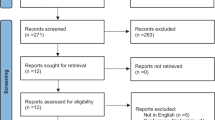Abstract
Traditional rehabilitation procedures do not meet all the latest requirements of ecological validity and new challenges in public health in terms of their technical characteristics. The article discusses new methods of rehabilitation in clinical practice based on modern information technologies, in particular, neurofeedback. Since motor functions are of central significance for human life, an important innovation is the use of the brain–computer interface (BCI) technology in the rehabilitation of patients after stroke. Two major directions in BCI technology development in neurorehabilitation and the efficacy of mental training are discussed. The results of pilot experiments on voluntary movement restoration using a hand exoskeleton with priming are analyzed. The efficacy of motor imagery training with and without priming is compared in groups of patients with post-stroke hand paresis using exoskeleton and the noninvasive BCI technology. Our data did not support the empirical hypothesis that special regulatory priming would influence the effectiveness of practice on motor imagery (extension of the hand). Qualitative analysis showed that priming provided prior to a mentally performed motion increased the effectiveness of technology in the rehabilitation of patients and had a nonspecific effect on the possibility of mentally performing the movement. These findings contribute to the understanding of clinical and psychological mechanisms of the rehabilitation process based on computer technologies and can help to promote the mental training technology and improve its effectiveness.

Similar content being viewed by others
REFERENCES
Bayona, N.A., Bitensky, J., Salter, K., and Teasell, R., The role of task-specific training in rehabilitation therapies, Top. Stroke Rehabil., 2005, vol. 12, no. 3, p. 58.
Rickhag, M., Wieloch, T., Gidö, G., et al., Comprehensive regional and temporal gene expression profiling of the rat brain during the first 24 h after experimental stroke identifies dynamic ischemia-induced gene expression patterns, and reveals a biphasic activation of genes in surviving tissue, J. Neurochem., 2005, vol. 96, no. 1, p. 14.
Liu, K.P., Chan, C.C., Lee, T.M., and Hui-Chan, C.W., Mental imagery for promoting relearning for people after stroke: a randomized controlled trial, Arch. Phys. Med. Rehabil., 2004, vol. 85, no. 9, p. 1403.
Birbaumer, N., Ghanayim, N., Hinterberger, T., et al., A spelling device for the paralyzed, Nature, 1999, vol. 398, no. 6725, p. 297.
Kübler, A., Nijboer, F., Mellinger, J., et al., Patients with ALS can use sensorimotor rhythms to operate a brain-computer interface, Neurology, 2005, vol. 64, no. 10, p. 1775.
Pfurtscheller, G. and Neuper, C., Future prospects of ERD/ERS in the context of brain–computer interface (BCI) developments, Prog. Brain Res., 2006, vol. 159, p. 433.
Pfurtscheller, G., Müller-Putz, G.R., Scherer, R., and Neuper, C., Rehabilitation with brain-computer interface systems, Computer, 2008, vol. 41, no. 10, p. 58.
Hochberg, L.R., Serruya, M.D., Friehs, G.M., et al., Neuronal ensemble control of prosthetic devices by a human with tetraplegia, Nature, 2006, vol. 442, p. 64.
Wang, W., Collinger, J.L., Perez, M.A., et al., Neural interface technology for rehabilitation: exploiting and promoting neuroplasticity, Phys. Med. Rehabil. Clin., 2010, vol. 21, no. 1, p. 157.
Leeb, R., Tonin, L., Rohm, M., et al., Towards independence: a BCI telepresence robot for people with severe motor disabilities, Proc. IEEE, 2015, vol. 103, no. 6, p. 969.
Zhang, Y., Zhou, G., Jin, J., et al., SSVEP recognition using common feature analysis in brain–computer interface, J. Neurosci. Methods, 2015, vol. 224, p. 8.
Huster, R.J., Mokom, Z.N., Enriquez-Geppert, S., and Herrmann, C.S., Brain–computer interfaces for EEG neurofeedback: Peculiarities and solutions, Int. J. Psychophysiol., 2014, vol. 91, no. 1, p. 36.
Jovic, J., Escande, A., Ayusawa, K., et al., Humanoid and human inertia parameter identification using hierarchical optimization, IEEE Trans. Rob., 2016, vol. 32, no. 3, p. 726.
He, J., McCarley, J.S., Crager, K., et al., Does wearable device bring distraction closer to drivers? Comparing smartphones and Google Glass, Appl. Ergon., 2018, vol. 70, p. 156.
Randolph, A.B., Moore Jackson, M.M., and Mason, S.G., Characterizing control of brain–computer interfaces with biogauges, in Towards Practical Brain-Computer Interfaces: Bridging the Gap from Research to Real-World Applications, Allison, B.Z., Dunne, S., Leeb, R., Millán, J.D.R., and Nijholt, A., Eds., Heidelberg: Springer Verlag, 2012, p. 395.
Hammond, D.C., Neurofeedback treatment of depression and anxiety, J. Adult Dev., 2005, vol. 12, nos. 2–3, p. 131.
Hammond, D.C., What is neurofeedback: an update, J. Neurother., 2011, vol. 15, no. 4, p. 305.
Nelson, L.A., The role of biofeedback in stroke rehabilitation: past and future directions, Top. Stroke Rehabil., 2007, vol. 14, no. 4, p. 59.
Buch, E., Weber, C., Cohen, L.G., et al., Think to move: a neuromagnetic brain-computer interface (BCI) system for chronic stroke, Stroke, 2008, vol. 39, no. 3, p. 910.
Kleim, J.A. and Jones, T.A., Principles of experience-dependent neural plasticity: implications for rehabilitation after brain damage, J. Speech, Lang., Hear. Res., 2008, vol. 51, p. 225.
Daly, J.J., Cheng, R., Rogers, J., et al., Feasibility of a new application of noninvasive brain computer interface (BCI): a case study of training for recovery of volitional motor control after stroke, J. Neurol. Phys. Ther., 2009, vol. 33, no. 4, p. 203.
Ang, K.K., Chua, K.S.G., Phua K.S., et al., A randomized controlled trial of EEG-based motor imagery brain-computer interface robotic rehabilitation for stroke, Clin. EEG Neurosci., 2015, vol. 46, no. 4, p. 310.
Ang, K.K., Guan, C., Phua, K.S., et al., Brain-computer interface-based robotic end effector system for wrist and hand rehabilitation: results of a three-armed randomized controlled trial for chronic stroke, Front. Neuroeng., 2014, vol. 7, p. 30.
Ramos-Murguialday, A., Broetz, D., Rea, M., et al., Brain-machine interface in chronic stroke rehabilitation: a controlled study, Ann. Neurol., 2013, vol. 74, no. 1, p. 100.
Ono, T., Shindo, K., Kawashima, K., et al., Brain-computer interface with somatosensory feedback improves functional recovery from severe hemiplegia due to chronic stroke, Front. Neuroeng., 2014, vol. 7, p. 7.
Frolov, A.A., Biryukova, E.V., Bobrov, P.D., et al., Efficiency of complex neurorehabilitation of patients with post-stroke hand paresis using the brain-computer + exoskeleton neurointerface, Al’m. Klin. Med., 2016, vol. 44, no. 3, p. 280.
Mokienko, O.A., Chernikova, L.A., Frolov, A.A., and Bobrov, P.D., Motor imagery and its practical application, Neurosci. Behav. Physiol., 2014, vol. 44, no. 5, p. 483.
Barclay-Goddard, R.E., Stevenson, T.J., Thalman, L., and Poluha, W., Mental practice for treating upper extremity deficits in individuals with hemiparesis after stroke, Stroke, 2011, vol. 42, no. 11, p. 574.
Mokienko, O.A., Chervyakov, A.V., Kulikova, S.N., et al., Increased motor cortex excitability during motor imagery in brain–computer interface trained subjects, Front. Comput. Neurosci., 2013, vol. 7, p. 168.
Pfurtscheller, G. and Lopes da Silva, F.H., Event-related EEG/MEG synchronization and desynchronization: basic principles, Clin. Neurophysiol., 1999, vol. 110, no. 11, p. 1842.
Wolpaw, J.R., Birbaumer, N., McFarland, D.J., et al., Brain-computer interfaces for communication and control, Clin. Neurophysiol., 2002, vol. 113, no. 6, p. 767.
Bajaj, S., Butler, A.J., Drake, D., and Dhamala, M., Brain effective connectivity during motor-imagery and execution following stroke and rehabilitation, NeuroImage, 2015, vol. 8, p. 572.
Shih, J.J., Krusienski, D.J., and Wolpaw, J.R., Brain–computer interfaces in medicine, Mayo Clin. Proc., 2012, vol. 87, no. 3, p. 268.
Frolov, A.A., Gusek, D., Bobrov, P.D., et al., Localization of brain electrical activity sources and hemodynamic activity foci during motor imagery, Hum. Physio-l., 2014, vol. 40, no. 3, p. 273.
Page, S.J., Levine, P., and Leonard, A.C., Effects of mental practice on affected limb use and function in chronic stroke, Arch. Phys. Med. Rehabil., 2005, vol. 86, no. 3, p. 399.
Page, S.J., Levine, P., and Leonard, A.C., Mental practice in chronic stroke: results of a randomized, placebo-controlled trial, Stroke, 2007, vol. 38, no. 4, p. 1293.
Soekadar, S.R., Birbaumer, N., Slutzky, M.W., and Cohen, L.G., Brain–machine interfaces in neurorehabilitation of stroke, Neurobiol. Dis., 2015, vol. 83, p. 172.
Grosse-Wentrup, M., Mattia, D., and Oweiss, K., Using brain–computer interfaces to induce neural plasticity and restore function, J. Neural Eng., 2011, vol. 8, no. 2, p. 025004.
Steenbergen, B., Crajé, C., Nilsen, D.M., and Gordon, A.M., Motor imagery training in hemiplegic cerebral palsy: a potentially useful therapeutic tool for rehabilitation, Dev. Med. Child Neurol., 2009, vol. 51, no. 9, p. 690.
Sechenov, I.M., Reflexes of the brain: an attempt to introduce the physiological basis into the psychic, in Izbrann-ye proizvedeniya (Selected Works), Koshtoyants, Kh.S., Ed., Moscow: Akad. Nauk SSSR, 1952, vol. 1, p. 7.
Pavlov, I.P., Lektsii o rabote bol’shikh polusharii golovnogo mozga (Lectures about the Activity of the Cerebral Hemispheres), Moscow: Akad. Nauk SSSR, 1949.
Ukhtomskii, A.A., Izbrannye trudy (Selected Research Works), Leningrad: Nauka, 1978.
Anokhin, P.K., Ocherki po fiziologii funktsional’nykh sistem (Essays on the Physiology of Functional Systems), Moscow: Meditsina, 1975.
Biryukova, E.V., Pavlova, O.G., Kurganskaya, M.E., et al., Recovery of the motor function of the arm with the aid of a hand exoskeleton controlled by a brain–computer interface in a patient with an extensive brain lesion, Hum. Physiol., 2016, vol. 42, no. 1, p. 13.
Meyer, D.E. and Schvaneveldt, R.W., Facilitation in recognizing pairs of words: evidence of a dependence between retrieval operations, J. Exp. Psychol., 1971, vol. 90, no. 2, p. 227.
Stone, M., Ladd, S.L., and Gabrieli, J.D., The role of selective attention in perceptual and affective priming, Am. J. Psychol., 2000, vol. 113, no. 3, p. 341.
Tulving, E., Kapur, S., Craik, F.I.M., et al., Hemispheric encoding/retrieval asymmetry in episodic memory: positron emission tomography findings, Proc. Natl. Acad. Sci. U.S.A., 1994, vol. 91, no. 6, p. 2016.
Leuthold, H. and Kopp, B., Mechanisms of priming by masked stimuli: Inferences from event-related brain potentials, Psychol. Sci., 1998, vol. 9, p. 263.
Hermans, D., Spruyt, A., De Houwer, J., and Eelen, P., Affective priming with subliminally presented pictures, Can. J. Exp. Psychol., 2003, vol. 57, no. 2, p. 97.
Forget, J., Lippe, S., and Lassonde, M., Perceptual priming does not transfer interhemispherically in the acallosal brain, Exp. Brain Res., 2008, vol. 192, no. 3, p. 443.
Schmidt, F., Haberkamp, A., and Schmidt, T., Dos and don’ts in response priming research, Adv. Cognit. Psychol., 2011, vol. 7, no. 1, p. 120.
Buccino, G., Arisi, D., Gough, P., et al., Improving upper limb motor functions through action observation treatment: a pilot study in children with cerebral palsy, Dev. Med. Child Neurol., 2012, vol. 54, no. 9, p. 822.
Schuster, C., Hilfiker, R., Amft, O., et al., Best practice for motor imagery: a systematic literature review on motor imagery training elements in five different disciplines, BMC Med., 2011, vol. 9, p. 75.
ACKNOWLEDGMENTS
We are grateful to the Neurorehabilitation Department of the Research Center of Neurology for their collaboration in organizing and conducting the study and to Prof. L.A. Chernikova for support and inspiration.
Funding
This study was supported by the Russian Foundation for Basic Research, project no. 17-29-02169 “The Use of Modern Information Technologies (Virtual Reality, iTracking, Neurobiofeedback) for Clinico-Psychological Diagnosis and Rehabilitation of Subjects with Cognitive and Emotional Disorders”. The study was a part of the state research and development program of the Research Center of Neurology.
Author information
Authors and Affiliations
Corresponding author
Ethics declarations
Conflict of interest. The authors declare that they have no conflict of interests related to the present publication.
Statement of compliance with standards of research involving humans as subjects. All procedures involving human participants were in accordance with the ethical standards of the 1964 Helsinki Declaration and its later amendments and was approved by the Ethical Committee of the Research Center of Neurology, resolution no. 1-6/16 from January 27, 2016. All participants signed a written informed consent form after being informed about the potential risks and advantages, as well as about the design of the study.
Additional information
Translated by D. Timchenko
Rights and permissions
About this article
Cite this article
Kovyazina, M.S., Varako, N.A., Lyukmanov, R.K. et al. Neurofeedback in the Rehabilitation of Patients with Motor Disorders after Stroke. Hum Physiol 45, 444–451 (2019). https://doi.org/10.1134/S0362119719040042
Received:
Revised:
Accepted:
Published:
Issue Date:
DOI: https://doi.org/10.1134/S0362119719040042




